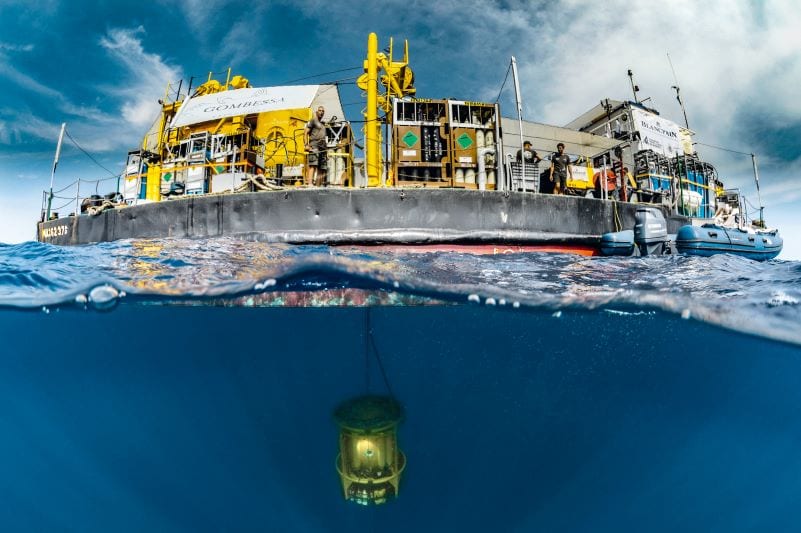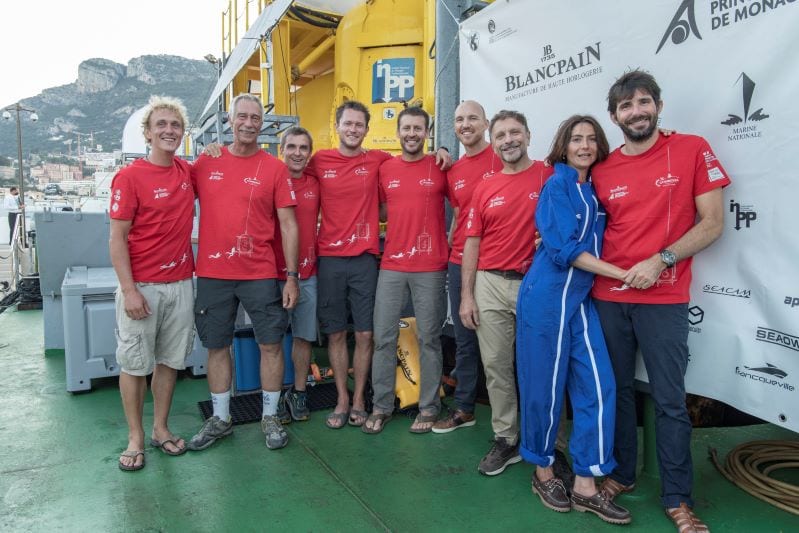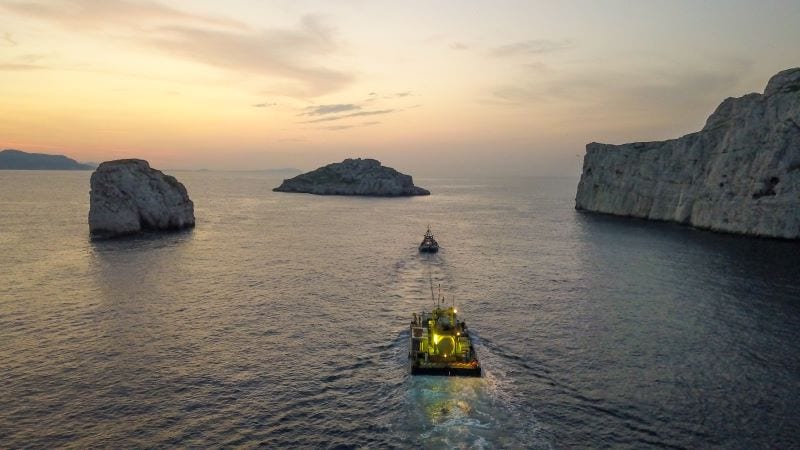After 20 days locked in a 5m2 life capsule, the intrepid scientists of the Gombessa 6 returned to Monaco on Tuesday with answers and even more questions about the puzzling rings of coral they explored off the coast of Cap Corse.
The mystery of the Cap Corse coral rings is being slowly unravelled after the head of underwater expeditions, biologist and photographer Laurent Ballesta, along with aquanauts Antonin Guilbert, Thibault Rauby and Roberto Rinaldi, spent 20 days on the sea floor observing and categorising findings from this never-before explored area.
The mission was made possible through a collaboration between several partners including the Prince Albert II of Monaco Foundation and Swiss watchmaker Blancpain. A reception was held after the return of the team on Tuesday, hosted by the Prince’s Foundation.
There were 35 French and international researchers on the operation. The cooperation of the researchers, who all had their own pet projects in mind, was a testament to the level of willingness to learn and share on all levels.

Located 120 metres under the sea, the 4km2 zone encases coral structures that reach up to 30 metres in circumference and are home to an astonishing array of sea life.
“The mission ends with, as with all expeditions, its share of things of which we are proud, but also with frustration,” said Laurent Ballesta. “We have approached new horizons that we had not imagined and that makes us want to go further. But the goals were met and it’s wonderful.
“Scientifically, there was the riddle of these rings first. We have succeeded in carrying out cores, sometimes over a metre, to pierce the rock in the heart of these rings. It was far from a given because we didn’t have the opportunity to test these manoeuvres before.”
These samples were able to be taken through a collaboration with the Sephismer, the French Navy’s human diving division. In the samples, there were some surprising findings. A coral called Callogorgia, which typically lives in far deeper waters, was found, as were small pearly shells thought to exist only in tropical reefs. DNA samples were also obtained, and the divers placed hydrophones and current metres in the rings to be able to observe remotely the comings and goings of sea life as well as the sea conditions.

“We hope that the results of our research will help to understand the origin of rings, how they function, their age, etc. And there is still so much to discover,” Ballesta went on to say.
In addition to reaching their scientific goals, the team were also rewarded with some exciting finds, such as a line of underwater caves that have yet to be explored, as well as something that scientists rarely can boast of: the discovery of a new species.
“We found a small nudibranch sea slug that we had seen on a previous dive, and which turns out to be a new species. We are going to have the privilege of giving it a name and that is a great source of pride. It will most certainly be my daughter’s first name,” the team leader said.

Aquanaut Thierry Rauby voiced his early concerns, which soon dissipated as the mission progressed. “Before the start of the expedition, I was worried that spending 20 days around a sandy bottom would quickly end up being boring. But we have discovered an incredible biodiversity. It was a very good surprise. We have the impression that we have only glimpsed something incredible and, of course, it makes you want to go back.”
Along with the good, there was a bit of bad. The team came across plastic waste mixing with thousand-year-old amphorae and stunning sea fauna, a stark reminder of our human impact on the planet.
The team brought back thousands of images, which will be put together in association with Arte to create a film about the voyage. They also plan to make a book and to hold conferences to speak about their discoveries, raise awareness and promote environmental protection.

Results from the mission will start coming in September, with the DNA results being forecast to arrive by the end of the year and the rest of the test results by the end of 2022.
The team intend to make more journeys to their new, now not-so-hidden treasure where they hope to continue unlocking the mysteries of this fascinating area.
Top photo by Photo by Laurent Ballesta, Gombessa Expéditions
